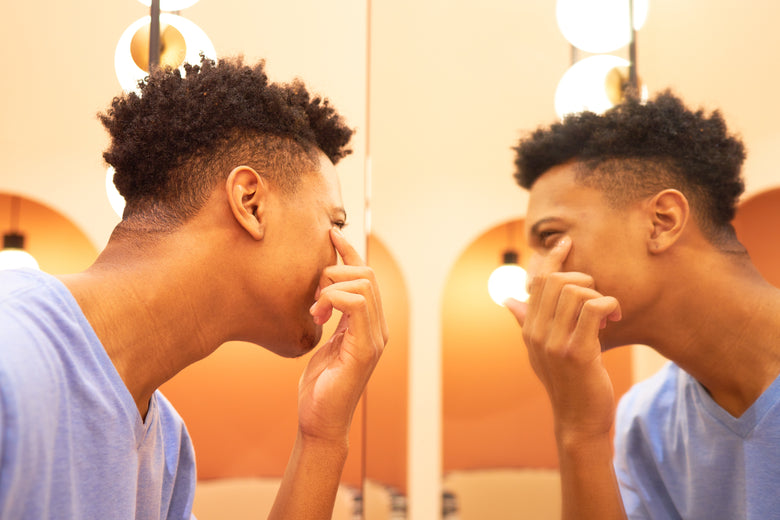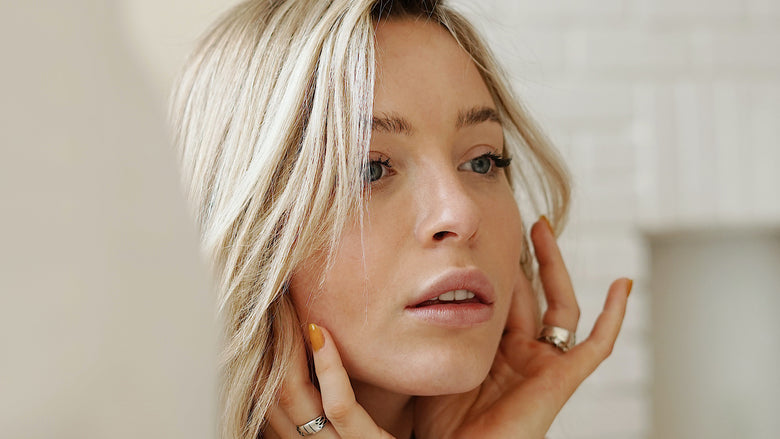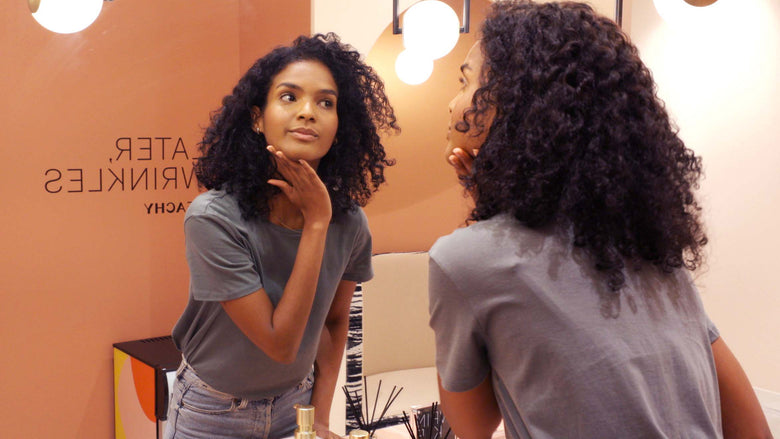What is Botox®?
Botox® is one brand of botulinum toxin serotype A. Other brands include Xeomin®, Jeuveau®, and Dysport®, all four of which use neuromodulating proteins to relax specific muscles causing wrinkles and fine lines to form.
At the cellular level, neuromodulators work by limiting the release of neurotransmitters – acetylcholine in this case – which cause the muscles of the body to contract. Once the botox injection occurs, the proteins gradually bind to receptors responsible for muscle contraction, leading to lighter muscle contractions.
Note: Contrary to the stereotype, botox doesn’t suspend normal facial expression! Over time, your body metabolizes, or breaks down, the botox protein and muscle contractions slowly return to their previous range.
This relaxing of targeted muscles is what helps to diminish or otherwise erase fine lines of the face. Preventative botox is especially important for wrinkle prevention, as it keeps dynamic wrinkles from progressing to static wrinkles.
Is botox safe?
Extremely, and effective.
The FDA approved botox injections in 2002 for eyebrow lines, 2013 for crow’s feet, and 2017 for forehead wrinkles.
Notably, botox was first approved for medical use in 1989 – long before showing promise in cosmetics. So while its FDA approval is relatively new, the science underlying botox as a therapeutic agent is very well founded.
Since botox’s beginnings, no long-term adverse effects have been reported and no systemic safety problems have been associated with proper FDA-approved use. It is considered a drug with a broad margin of safety and is wonderfully effective at treating wrinkles and fine lines.
What is filler?
Fillers are gel-like substances designed for injecting beneath the skin’s surface to add volume and fullness. Hyaluronic acid derivatives are the most widely used biodegradable fillers that vary between product factors like cross-linking, concentration, and particle size.
Fillers are traditionally used in facial enhancing procedures. Cheek and lip augmentation, midfacial volumizing, and tear trough correction are a few. Most FDA-approved fillers are temporary and achieve a smoothing or “filling” effect, which remains in the body for about six months, sometimes longer.
Is filler safe?
Most adverse reactions are mild and transient. However, more serious reactions do occur from time to time, and at the risk of leaving patients with long-lasting functional and aesthetic impairments. Some reactions occur immediately after treatment, whereas some have a delayed onset. Examples include bruising, swelling, abscess formation, and tissue necrosis.
How big are the differences?
Botox and filler are very different from one another. Botox is exclusively for preventing wrinkles and minimizing fine lines that have already formed. Preventative botox works with the body to resolve wrinkles and does not alter a person’s natural appearance. Filler by contrast can be used to correct textured skin, depressions, and deep-set wrinkles, though they are more commonly used in cosmetic enhancing ways as detailed above.
Duration of onset:
Botox: Recipients will begin seeing effects in 5–10 days, with full results in 2 weeks.
Filler: Recipients see immediate results.
Composition:
Botox: Arrives in powder form and is reconstituted with saline into a clear liquid.
Filler: Viscous gel that comes in prepackaged syringes; viscosity varies based on desired product and treatment area.
Metabolic breakdown:
Botox: Body naturally metabolizes the protein in 3–6 months.
Filler: Body naturally metabolizes the gel in 6–18 months (longevity varies by product).
Cost of service:
Compared to botox, fillers tend to be substantially higher in price, as 2020 findings from the American Society of Plastic Surgeons show.The average cost for common soft-tissue fillers like Juvederm® and Restylane® begin at around $700, with more advanced options floating closer to $2,000 and higher!
The average cost for botox: $466
What these figures don’t account for is how widely the cost of service varies depending on the nature of the work – like where treatment gets administered and a person’s individual dosing needs.
More problematic is that providers routinely price service by their client’s dosing needs. This incentivizes overtreatment and inherently puts you at risk of leaving with a look you didn’t come in for. We’re different
At Peachy, we set the price for preventative botox at $425 for all three FDA-approved areas of the face. We eliminate the guesswork with our very own AI treatment mapping technology that our providers use to determine your ideal dose.
Our providers work one-on-one with you to define and reach your personal complexion goals. We view skincare holistically through the lens of prevention, pairing prescription retinoids for collagen enhancement and daily-use SPF with a personalized botox regimen to keep wrinkles away and your complexion the way you want it.
Citations
Small R.Botulinum toxin injection for facial wrinkles. Am Fam Physician. 2014 Aug 1;90(3):168-75.Carruthers JA, Lowe NJ, Menter MA, et al.; BOTOX Glabellar Lines I Study Group. A multicenter, double-blind, randomized, placebo-controlled study of the efficacy and safety of botulinum toxin type A in the treatment of glabellar lines. J Am Acad Dermatol. 2002; 46:840-9. doi:10.1067/mjd.2002.121356
Binder, W. Long-term effects of botulinum toxin type A (Botox) on facial lines. Facial Plast Surg. 2006 Nov-Dec; 8(6):426-31. doi:10.1001/archfaci.8.6.426Funt D, Pavicic T. Dermal fillers in aesthetics: an overview of adverse events and treatment approaches. Clin Cosmet Investig Dermatol. 2013;6:295–316. Published 2013 Dec 12. doi:10.2147/CCID.S50546
Gold MH. Use of hyaluronic acid fillers for the treatment of the aging face. Clin Interv Aging. 2007;2(3):369–376. doi:10.2147/cia.s1244Lafaille P, Benedetto A. Fillers: contraindications, side effects and precautions. J Cutan Aesthet Surg. 2010;3(1):16–19. doi:10.4103/0974-2077.63222




